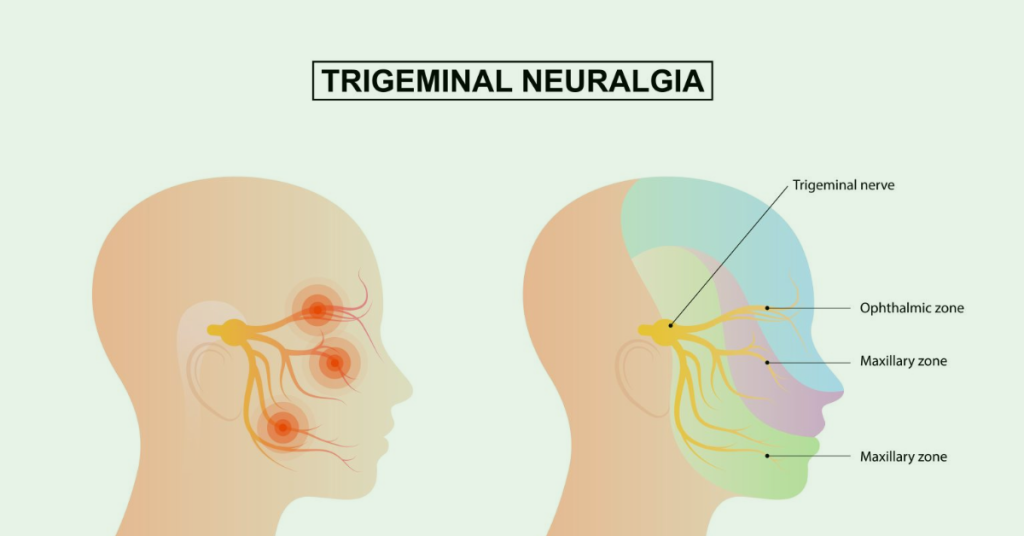Trigeminal Neuralgia (TN), often described as one of the most painful conditions known to medical science, poses significant challenges in terms of management and treatment. With conventional therapies sometimes falling short of providing relief, patients and healthcare providers alike are turning their attention towards alternative treatments. This blog, brought to you by the experts at Neurosciences Centers, delves into the realm of these alternative therapies, aiming to shed light on their effectiveness and potential role in the comprehensive management of Trigeminal Neuralgia. From innovative medical approaches to integrative practices, we explore the spectrum of options available, providing insights and guidance for those seeking relief from the debilitating pain associated with TN.
Understanding Trigeminal Neuralgia
Trigeminal Neuralgia (TN) is a chronic pain condition affecting the trigeminal nerve, which carries sensation from your face to your brain. Known for causing extreme, sporadic, sudden burning, or shock-like facial pain, TN can be a significant burden on those affected. Traditional treatments typically involve medications such as anticonvulsants and muscle relaxants, and in more severe cases, surgical interventions might be considered. However, these approaches don’t always yield the desired relief, or they may come with side effects that are difficult to manage.
At Neurosciences Centers, our deep understanding of TN’s complexities fuels our commitment to exploring and providing effective alternative treatments. Recognizing the limitations of standard therapies, we delve into a broad spectrum of innovative and less invasive options tailored to individual patient needs, emphasizing a holistic approach to pain management and recovery.
The Basics of TN: Symptoms and Traditional Treatments
Trigeminal Neuralgia symptoms include intense facial pain that can be triggered by mild stimulation of the face, such as from brushing teeth or putting on makeup. Traditional treatments have focused on pharmaceutical management to reduce nerve pain and surgical options to address nerve compression. At Neurosciences Centers, we leverage this foundational knowledge to inform our comprehensive treatment plans, ensuring that patients have access to the latest in medical advancements as well as time-honored strategies for pain relief.
The Need for Alternative Treatments
The quest for alternative treatments arises from the realization that conventional methods do not address all patients’ needs. Side effects from medication, the invasive nature of surgical options, or incomplete relief from pain are common reasons patients seek alternatives. Neurosciences Centers is at the forefront of incorporating cutting-edge research and techniques into our practice. Our team is dedicated to investigating and implementing alternative therapies that offer hope and improved quality of life for our patients with Trigeminal Neuralgia, ensuring a range of options that go beyond traditional medical approaches.
The Role of Interventional Procedures in Treating Trigeminal Neuralgia
Interventional procedures represent a cornerstone of the alternative treatment spectrum for Trigeminal Neuralgia (TN), particularly for patients who have not found relief through medication or seek alternatives to more invasive surgical options. At Neurosciences Centers, our team leverages the latest advancements in interventional techniques to offer patients effective and minimally invasive solutions. Focusing on balloon compression and glycerol injection, we aim to alleviate the debilitating pain associated with TN, enhancing patient quality of life through precision-guided treatments.
Balloon Compression
Balloon compression is a minimally invasive procedure that offers significant relief for patients suffering from Trigeminal Neuralgia. This technique involves the insertion of a tiny balloon through a catheter in the cheek, guided to the site where the trigeminal nerve exits the brainstem. Once in place, the balloon is inflated to compress the nerve, disrupting pain signals. At Neurosciences Centers, our specialists are skilled in performing this procedure, which is often chosen for its ability to provide immediate pain relief and its relatively short recovery time compared to more invasive surgeries.
Glycerol Injection
Glycerol injection is another interventional approach utilized at Neurosciences Centers to manage TN pain. This procedure involves the injection of a sterile glycerol solution into the area where the trigeminal nerve splits into its three branches. The glycerol works by damaging the insulation of nerve fibers that are responsible for transmitting pain signals. This outpatient procedure is noted for its effectiveness in reducing or eliminating pain for many patients, offering a viable option for those seeking alternatives to surgical intervention.
At Neurosciences Centers, our commitment to integrating the latest research and techniques in the treatment of Trigeminal Neuralgia underscores our dedication to patient care. By offering advanced interventional procedures like balloon compression and glycerol injection, we provide hope and improved outcomes for our patients, underscoring our role as leaders in the field of neurosciences and pain management.
Advances in Neurostimulation Techniques
Neurostimulation techniques represent a frontier in the treatment of Trigeminal Neuralgia (TN), offering hope to patients for whom medication provides insufficient relief. At Neurosciences Centers, our commitment to incorporating the latest advancements in neurology and neurosurgery positions us at the cutting edge of treating neuralgic pain. We specialize in advanced neurostimulation techniques, including Microvascular Decompression (MVD) and Gamma Knife Radiosurgery, tailored to the specific needs of our patients.
Microvascular Decompression (MVD)
Microvascular Decompression (MVD) stands as a cornerstone in the surgical treatment of Trigeminal Neuralgia. This procedure involves the careful separation of the trigeminal nerve from any abutting blood vessels causing nerve compression, thereby alleviating the source of pain without damaging the nerve itself. At Neurosciences Centers, our skilled neurosurgeons utilize state-of-the-art technology and techniques to perform MVD with precision, maximizing the potential for pain relief while minimizing risks. Our patients benefit from a comprehensive care approach that supports them through diagnosis, surgery, and post-operative recovery, ensuring the best possible outcomes.
Gamma Knife Radiosurgery
Gamma Knife Radiosurgery offers a non-invasive alternative for patients seeking relief from TN pain. This targeted form of radiation therapy focuses high-intensity gamma rays on the root of the trigeminal nerve, causing a therapeutic lesion that disrupts pain signals without the need for open surgery. Neurosciences Centers is at the forefront of employing Gamma Knife technology, providing patients with a highly effective treatment option that involves minimal discomfort and recovery time. Our multidisciplinary team works closely with patients to evaluate the suitability of Gamma Knife Radiosurgery, considering individual health profiles and treatment goals to ensure optimal care.
The Potential of Complementary and Integrative Medicine
The realm of complementary and integrative medicine opens up new avenues for managing Trigeminal Neuralgia, focusing on the body’s natural healing processes and the patient’s overall well-being. At Neurosciences Centers, we advocate for an approach that considers the individual’s unique condition, lifestyle, and preferences, incorporating treatments that have shown promise in alleviating TN symptoms and enhancing patients’ coping mechanisms.
Acupuncture and Biofeedback
Acupuncture, a practice rooted in traditional Chinese medicine, involves the insertion of thin needles into specific points on the body. It’s believed to stimulate the nervous system and promote pain relief through the release of endorphins. Many TN patients have reported reduced pain intensity and frequency following acupuncture sessions. Similarly, biofeedback is a technique that teaches individuals to control physiological processes, such as muscle tension and blood pressure, that are normally involuntary. Through biofeedback, patients with TN can learn to manage their pain responses, reducing the severity of pain episodes.
Nutritional Supplements and Herbal Medicine
Nutritional supplements and herbal medicine offer additional paths to pain management and overall health enhancement for TN sufferers. Certain vitamins and minerals, including magnesium and vitamin B12, have been associated with nerve health and may contribute to reducing neuralgia symptoms. Similarly, herbal remedies, such as turmeric and ginger, known for their anti-inflammatory properties, can provide natural pain relief and support overall wellness. At Neurosciences Centers, we emphasize the importance of consulting with healthcare professionals before starting any new supplement or herbal regimen to ensure safety and compatibility with existing treatments.
Lifestyle Modifications and Self-Care Strategies
At Neurosciences Centers, we recognize that managing Trigeminal Neuralgia extends beyond medical treatments and interventions. A holistic approach that includes lifestyle modifications and self-care strategies is essential for comprehensive care. Such practices can significantly improve quality of life, reduce the frequency and severity of pain episodes, and enhance the effectiveness of other treatments. Embracing these strategies can empower patients, giving them an active role in their treatment plan.
Stress Management Techniques
Stress is a well-known trigger for TN pain flare-ups. At Neurosciences Centers, we advocate for incorporating stress management techniques into daily routines to help mitigate these triggers. Techniques such as mindfulness meditation, deep breathing exercises, and yoga have been shown to reduce stress levels and promote relaxation. Our team can guide patients in identifying the most suitable stress-relief practices for their lifestyles, encouraging regular practice to maximize benefits.
Physical Therapy and Exercise
Physical activity and targeted physical therapy can also play a pivotal role in managing TN. Exercise not only contributes to overall well-being but can also help in managing pain by releasing endorphins, the body’s natural painkillers. Neurosciences Centers’ physical therapy programs are tailored to meet the individual needs of TN patients, focusing on gentle exercises that avoid exacerbating facial pain while promoting strength and flexibility. Regular physical activity, guided by our specialists, can help patients maintain mobility and reduce the impact of TN on their daily lives.
Conclusion
Concluding our exploration of alternative treatments for Trigeminal Neuralgia (TN), it’s clear that a comprehensive approach, integrating both advanced medical interventions and holistic self-care strategies, is paramount. Neurosciences Centers stands at the forefront of this multidisciplinary approach, offering patients not just hope, but tangible pathways to managing and potentially alleviating the debilitating effects of TN. By considering individual needs and preferences, our team is dedicated to crafting personalized treatment plans that encompass the latest in medical advancements, lifestyle modifications, and supportive therapies.
Frequently Asked Questions (FAQs)
Q: What are the first signs of Trigeminal Neuralgia?
Ans: The first signs typically include sudden, severe episodes of facial pain, often described as a sharp shooting pain or like an electric shock in the jaw, teeth, or gums.
Q: Can Trigeminal Neuralgia be cured?
Ans: While there is no cure for TN, many treatments effectively manage pain, including medications, surgical interventions, and various alternative therapies explored at Neurosciences Centers.
Q: How can stress management help with TN?
Ans: Stress management can significantly reduce the frequency and severity of TN flare-ups by minimizing one of the common triggers for pain episodes, thereby improving overall quality of life.
Q: Is exercise safe for someone with TN?
Ans: Yes, with guidance from healthcare professionals. Targeted exercises and physical therapy can help manage TN by reducing stress, improving overall health, and releasing endorphins, which naturally help to lessen pain.
Q: How does Neurosciences Centers
Ans: Neurosciences Centers adopts a multidisciplinary approach to TN treatment, combining the latest medical interventions with holistic therapies such as stress management techniques and physical therapy, tailored to each patient’s unique needs.
Q: approach TN treatment?
Ans: The first signs typically include sudden, severe episodes of facial pain, often described as a sharp shooting pain or like an electric shock in the jaw, teeth, or gums.

